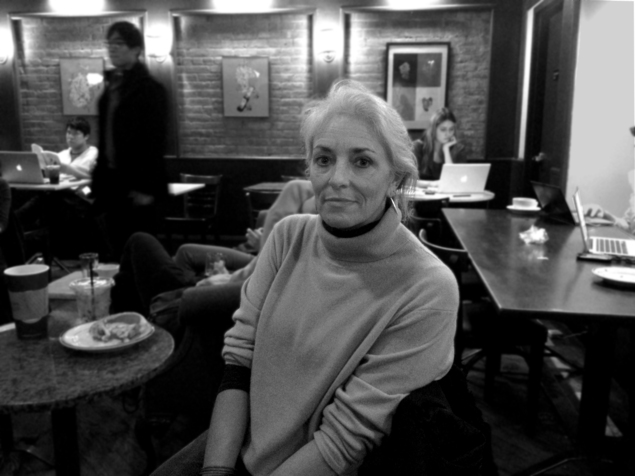I met Tracy Ann Essoglou at the Creative Time Summit last year which focused on “confronting inequity.” We connected after attending a seminar that was lead by Steve Lambert. Like magnets, Tracy and I, along with two representatives of Reel Grrls, were drawn together to exchange statistics and contact information.
Tracy had been a part of the Women’s Action Coalition (or WAC) in the nineties which is associated with the beginnings of Third Wave Feminism. You could place WAC alongside the Guerilla Girls (still active today) and ACT UP! as another activist organization that was using strategy and aesthetics to give a voice to politically charged issues of the time.
You can find her seminal article on WAC, entitled “Louder Than Words,” in the book But Is It Art? Her reflections on the organizational process and product include a self-awareness that does not ignore the pitfalls of WAC. Rather, it is a useful essay for those who want to build on the history of artistic activism. In other words, she does not canonize anyone involved but remains objective, reporting their efforts and challenges.
Sound & Light –WAC, (Houston Texas during the Republican Convention, 1992)
When Tracy came to New York, as a young adult, she got a job as an art handler/truck driver. “One of the reasons why I became an art driver was that, while I could have made $6/hr as a gallery girl – spent all that money dressing up and being ‘hey-baby,’ have to show up from 9a-5p, and have people come clawing at me (because that did, and does, happen – I don’t care what anybody says), but [as an art handler] I could make $18 an hour, and make my own schedule.” She further explained in an interview that she seemed to have an intuition for the physical space and care for the artwork that gave her fast credibility with the company and her fellow workers. Eventually the women employed by this particular company all walked away due to gender-biased refusal to recognize their leadership.
Among her many accomplishments is an academic one: her dissertation completed through the European Graduate School, Rendering Dimensions, Surrendering Dominion: An Epistemological Inquiry into Being-Grounded. In this document she excavates four zones she defines as “Seeing,” “Thinking,” “Being,” and “Acting (Out)” –fleshing out cultural presumptions about ownership, rights, and autonomy with unique rigor. (If the Necker Cube is a concept you are familiar with then you will have a head start diving into this text!)
In addition to being a passionate activist (a self-proclaimed “arch-feminist”) and academic, Tracy also has her own body of visual artwork. These works tie into her existential search for sustainable ideals wherein the individual and pluralistic society as a whole are taken into consideration and accountable to one another.
Sins of the New Millennium
She described to me two works in detail. The first is a kind of voting booth/confessional (an installation view is pictured above) where she lists for the viewer her own version of the seven deadly sins: “Aggression,” “Neglect,” “Territorialization,” “Impunity,” “Complacency,” “Wastefulness,” and “Willful Ignorance.” This list of “Sins” echoes her concerns about responsibility, care, and togetherness. The second work (pictured below) is another of her own constructions –a kind of vice or spit, where a thorny branch is presented. Though it is not normally the part of the rose that we attend to, she displays it in a rotating manner for the viewer to consider all its dimensions.
When asked about formative memories of art, Tracy recalled the home of a childhood friend. At this house there was a garden with rocks and an iron sculpture –a space dedicated to tranquility, it seemed. It was at this location where she first considered the possibility of an object without apparent functionality. I find it interesting how this recollection plays into Tracy’s use of materials (years later) even her sense of optimism/transcendence, and the carving out of a very particular kind of contemplative space. Space plays more of a role in her Sins work. (Although, some viewers of that work were too intimidated by the exposure through windows in the booth to inhabit the semi-privacy of the small space. Perhaps it felt like a trap?)
Visiting with Tracy really inspired me. She is an extremely graceful example of one dedicated to making women’s issues visible and remaining critical, yet surprisingly positive. Her integrity of vision and acceptance of challenges in life sets her apart as a person who is not afraid to live with (and in accountability to) fellow citizens of the world.
—
For more information on creative activism
visit Actipedia




